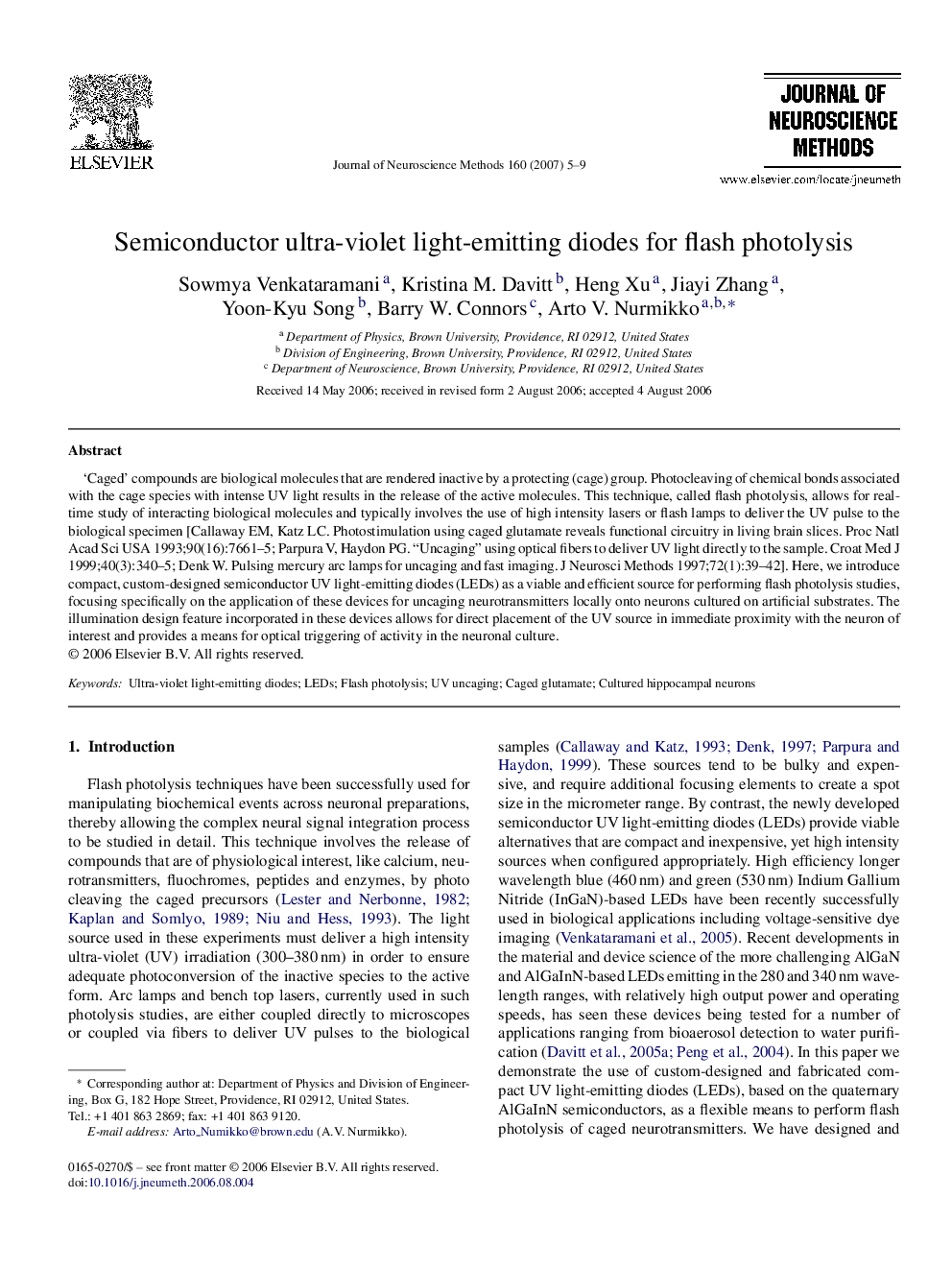| Article ID | Journal | Published Year | Pages | File Type |
|---|---|---|---|---|
| 4336799 | Journal of Neuroscience Methods | 2007 | 5 Pages |
‘Caged’ compounds are biological molecules that are rendered inactive by a protecting (cage) group. Photocleaving of chemical bonds associated with the cage species with intense UV light results in the release of the active molecules. This technique, called flash photolysis, allows for real-time study of interacting biological molecules and typically involves the use of high intensity lasers or flash lamps to deliver the UV pulse to the biological specimen [Callaway EM, Katz LC. Photostimulation using caged glutamate reveals functional circuitry in living brain slices. Proc Natl Acad Sci USA 1993;90(16):7661–5; Parpura V, Haydon PG. “Uncaging” using optical fibers to deliver UV light directly to the sample. Croat Med J 1999;40(3):340–5; Denk W. Pulsing mercury arc lamps for uncaging and fast imaging. J Neurosci Methods 1997;72(1):39–42]. Here, we introduce compact, custom-designed semiconductor UV light-emitting diodes (LEDs) as a viable and efficient source for performing flash photolysis studies, focusing specifically on the application of these devices for uncaging neurotransmitters locally onto neurons cultured on artificial substrates. The illumination design feature incorporated in these devices allows for direct placement of the UV source in immediate proximity with the neuron of interest and provides a means for optical triggering of activity in the neuronal culture.
